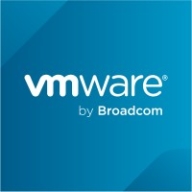

VMWare Tanzu CloudHealth and Nutanix Cloud Clusters (NC2) are competing products in cloud management and optimization. NC2 seems to have the upper hand due to superior on-premise-to-cloud integration capabilities, making it a preferred choice for seamless hybrid cloud operations.
Features: VMWare Tanzu CloudHealth excels in cost management and policy governance, providing robust analytics and visualization tools. It offers effective cloud expenses control. Nutanix Cloud Clusters (NC2) is noted for its seamless migration abilities and software-driven hyper-converged infrastructure, enhancing application performance and scaling flexibility.
Room for Improvement: VMWare Tanzu CloudHealth could improve its on-premise integration and hybrid cloud operations. It may need enhancements in flexibility of cloud deployment. NC2 could benefit from more detailed cloud spending analytics, superior cost management features, and streamlined policy governance to match Tanzu CloudHealth's offerings.
Ease of Deployment and Customer Service: VMWare Tanzu CloudHealth offers a straightforward onboarding process with dedicated support channels, which simplifies cloud service management. Nutanix Cloud Clusters (NC2) is appreciated for its flexible deployment model and intuitive management experience, favoring organizations seeking an easy path to a hybrid cloud ecosystem.
Pricing and ROI: VMWare Tanzu CloudHealth commands a premium due to advanced analytics and governance capabilities, offering a solid ROI for enterprises focusing on cost efficiency. Nutanix Cloud Clusters (NC2) provides competitive pricing and quick ROI via robust infrastructure enhancement features that reduce operational costs, emphasizing infrastructure improvements and operational savings.
| Product | Market Share (%) |
|---|---|
| Nutanix Cloud Clusters (NC2) | 0.8% |
| VMWare Tanzu CloudHealth | 1.9% |
| Other | 97.3% |


| Company Size | Count |
|---|---|
| Small Business | 11 |
| Midsize Enterprise | 8 |
| Large Enterprise | 11 |
| Company Size | Count |
|---|---|
| Small Business | 4 |
| Midsize Enterprise | 2 |
| Large Enterprise | 4 |
Nutanix Cloud Clusters (NC2) provide scalable and cost-efficient infrastructure management across cloud and on-premises environments. With features like data portability and ease of setup, NC2 enables seamless migration without application refactoring.
Nutanix Cloud Clusters (NC2) supports businesses in managing hybrid IT environments, enhancing disaster recovery, and optimizing workloads. Users value NC2 for its unified management platform and redundancy features, facilitating cloud migration and integration with major cloud providers. Challenges include pricing and initial setup complexity, as well as feature parity between different cloud services.
What are the key features of Nutanix Cloud Clusters (NC2)?Nutanix Cloud Clusters (NC2) find application in industries requiring reliable infrastructure management, like finance and healthcare, to safeguard critical systems. Organizations leverage NC2 for virtual desktops, application modernization, and smooth transition to cloud operations, improving data security and replication processes.
VMware Tanzu CloudHealth, formerly known as VMware Aria Cost Powered by CloudHealth, is a specialized cloud management platform tailored for Multi-Cloud Cost Optimization. It offers comprehensive visibility into cloud spending across various providers, enabling users to identify areas for optimization and make informed resource allocation decisions. With features like reserved instance management, resource rightsizing, and automated cost governance policies, it facilitates financial management for optimal cost efficiency. Beyond cost optimization, Tanzu CloudHealth enhances cloud operations through workload optimization and governance automation, catering to multi-cloud environments encompassing public, private, and hybrid clouds. Its primary focus remains on enabling organizations to effectively manage and reduce cloud expenditures while supporting operations across diverse cloud platforms.
We monitor all Cloud Management reviews to prevent fraudulent reviews and keep review quality high. We do not post reviews by company employees or direct competitors. We validate each review for authenticity via cross-reference with LinkedIn, and personal follow-up with the reviewer when necessary.